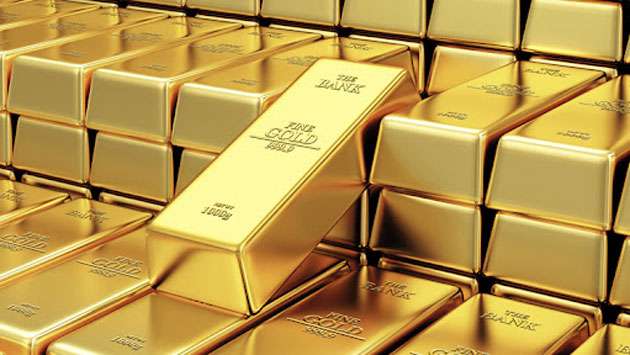Gold prices soared to unprecedented heights today, breaching the $2,900 mark in intraday trading. The precious metal’s rally was fueled by a perfect storm of escalating trade tensions, economic uncertainty, and a weakening dollar.
The primary catalyst for gold’s meteoric rise was the reignition of trade tensions between the United States and China. Beijing imposed retaliatory tariffs on American imports in response to new US duties on Chinese goods. This tit-for-tat strategy spooked investors, driving them towards the safety of gold.
Adding fuel to the fire, President Donald Trump expressed a dismissive stance on initiating dialogue with Chinese President Xi Jinping. China further escalated tensions by signaling potential sanctions against major US companies, including tech giants like Google.
The trade war’s potential economic fallout has investors on edge. Recent data, including the JOLTS report, pointed to slowing momentum in the US labor market. This development could force the Federal Reserve to maintain its easing cycle despite sticky inflation, further supporting gold prices.
Inflation fears are also contributing to gold’s upward trajectory. The Trump administration’s aggressive tariff policies are seen as potential catalysts for rising prices. Three Federal Reserve officials have warned of associated inflation risks, with one suggesting that uncertainty over future price stability might slow the pace of interest rate cuts.
The prospects of further policy easing by the Fed have kept the US Dollar depressed near its weekly low. A weaker dollar makes gold more attractive to international buyers, further boosting demand.
Central banks have been actively increasing their gold reserves, with acquisitions up 28% year-over-year. China and India are leading this trend, which adds significant support to gold prices.
While some technical indicators suggest overbought conditions, institutional investors continue to accumulate positions. Many analysts believe Goldman Sachs’ $3,000/oz target remains achievable.
Ilya Spivak, head of global macro at Tastylive, highlighted that if tensions persist, “China may be more encouraged to keep buying gold for reserves,” with the $3,000 mark becoming a key target.
As global markets navigate through these turbulent times, gold’s status as a safe-haven asset has been reinforced. The precious metal’s ability to hedge against government-driven market turbulence and economic uncertainty continues to attract investors seeking stability in an increasingly volatile world.
With the current geopolitical landscape and economic uncertainties, gold’s rally may have further room to run. However, investors should remain vigilant, as market conditions can change rapidly, especially given the overbought technical indicators and the potential for sudden shifts in trade negotiations or monetary policy.

